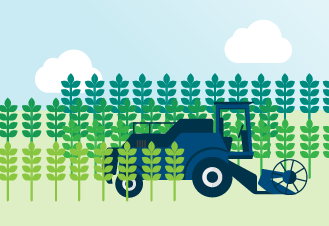
Cross-border enabled technologies also support many precision farming techniques that allow producers to maximize crop yields, while improving insights into weather, soil, and other relevant environmental conditions. These technologies can also help mitigate environmental impacts by minimizing water, fertilizer and pesticide use, and by reducing the carbon footprint of agricultural activities.
Small- and large-scale farmers are better positioned for success in planting, harvesting, and selling their agricultural products when they benefit from:
- Cross-border access to satellite and sensor-driven data (often via cell phone) from across regions into temperature, precipitation, drought, and other meteorological trends, as well as soil alkalinity and related analysis;
- Cross-border agricultural data analytics that offers insights and guidance for improved planting and harvesting decision-making at regional and local levels. For instance, data from drones and sensors can measure soil acidity, moisture retention, and various agricultural productivity metrics. A cloud-based AI system can analyze this agricultural data to recommend real-time adjustments that improve crop yields while lowering the costs and environmental effects of farming. The ability for such a system to provide insights to farmers in remote regions of the world depends on the ability to transfer data across borders;
- Cross-border access to up-to-date, reliable information on international commodity markets, pricing, insurance, and shipping options, as well as cost-effective techniques for crop development and protection; and
- Cross-border access to sales opportunities, connecting sellers and buyers online. These tools can help farmers reduce transaction costs, profit-taking and arbitrage by middlemen. This is a particularly important benefit as up to 70 percent of the final value of agricultural products sold by small-scale farmers is often captured by intermediaries through the value chain.
